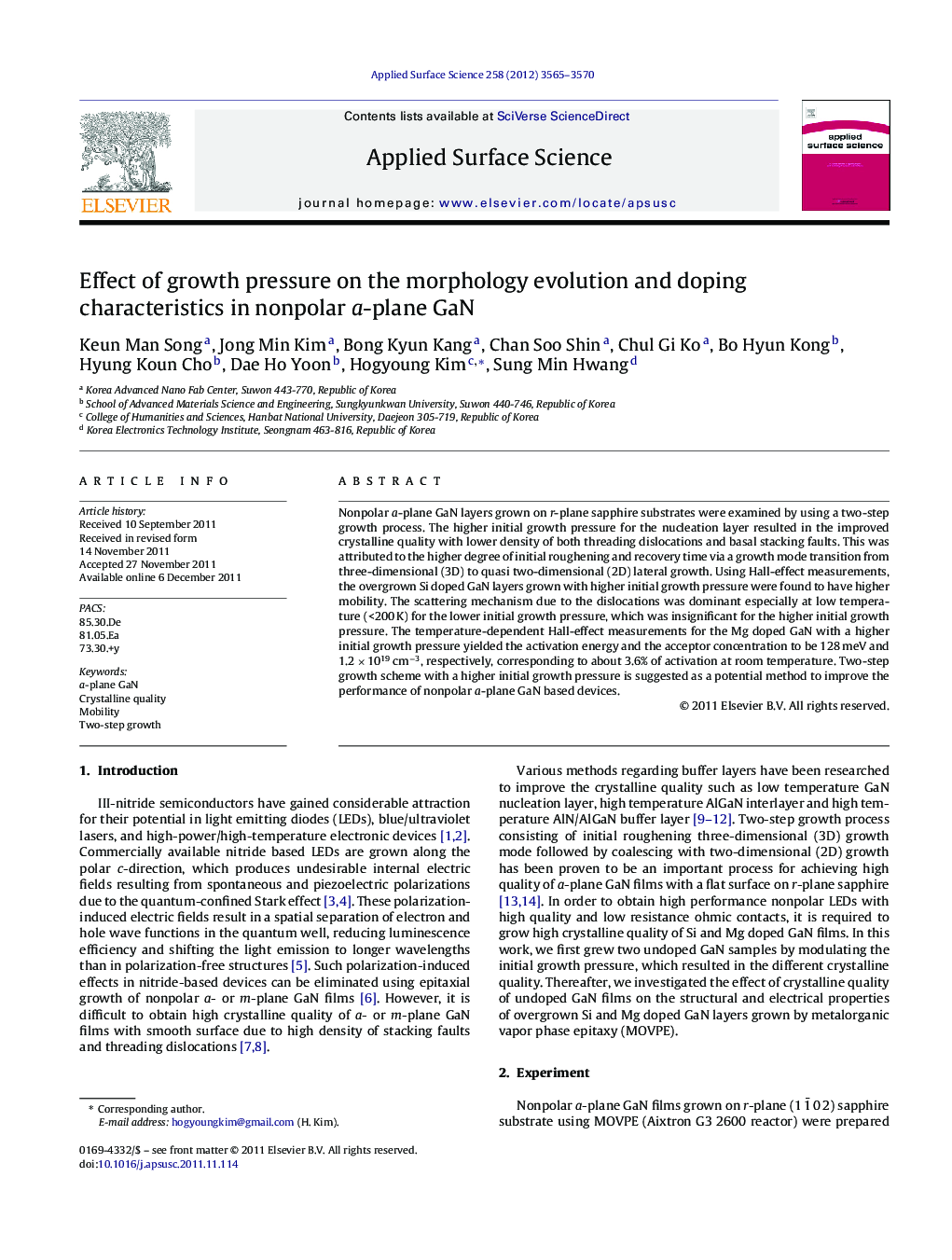| Article ID | Journal | Published Year | Pages | File Type |
|---|---|---|---|---|
| 5361237 | Applied Surface Science | 2012 | 6 Pages |
Abstract
Nonpolar a-plane GaN layers grown on r-plane sapphire substrates were examined by using a two-step growth process. The higher initial growth pressure for the nucleation layer resulted in the improved crystalline quality with lower density of both threading dislocations and basal stacking faults. This was attributed to the higher degree of initial roughening and recovery time via a growth mode transition from three-dimensional (3D) to quasi two-dimensional (2D) lateral growth. Using Hall-effect measurements, the overgrown Si doped GaN layers grown with higher initial growth pressure were found to have higher mobility. The scattering mechanism due to the dislocations was dominant especially at low temperature (<200Â K) for the lower initial growth pressure, which was insignificant for the higher initial growth pressure. The temperature-dependent Hall-effect measurements for the Mg doped GaN with a higher initial growth pressure yielded the activation energy and the acceptor concentration to be 128Â meV and 1.2Â ÃÂ 1019Â cmâ3, respectively, corresponding to about 3.6% of activation at room temperature. Two-step growth scheme with a higher initial growth pressure is suggested as a potential method to improve the performance of nonpolar a-plane GaN based devices.
Related Topics
Physical Sciences and Engineering
Chemistry
Physical and Theoretical Chemistry
Authors
Keun Man Song, Jong Min Kim, Bong Kyun Kang, Chan Soo Shin, Chul Gi Ko, Bo Hyun Kong, Hyung Koun Cho, Dae Ho Yoon, Hogyoung Kim, Sung Min Hwang,
